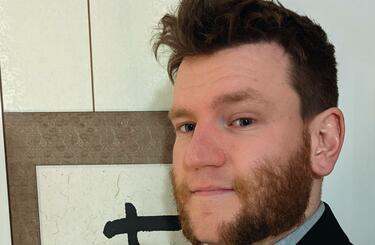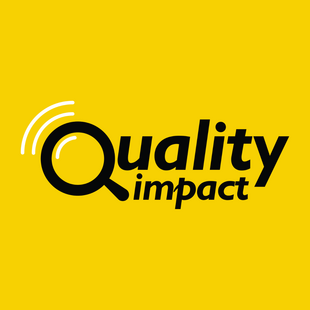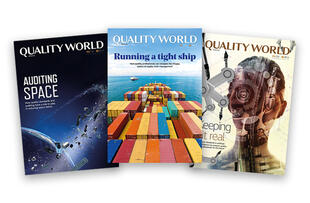
Bring the mountain to you
Progress indicator

Ryan Renard CQP FCQI examines the parallels between martial arts and the quality profession.
When humanity began to claim resources through force, there arose a need to attack and defend. Since one person taught another how to do it in an efficient and standardised way, there has been martial arts.
After the creation of martial arts, people sought the most effective ways to use their bodies as weapons, spending countless hours and days honing their body to suit their style. These styles imitated the ways animals move or refined the human form of movement using principles. In fact, some movements, by today’s standards, seem impossible – though, in a time when they could mean life or death, they were commonplace. A prominent example of this is in using our fingers and nails to strike – how hard would you choose to hit something with your fingertips?
We are far beyond the point where learning these arts is a necessity to survive and are now firmly in a place where people train in them by choice. Aside from personal motivations, what do they get out of their training? In short, personal mastery.
"Quality professionals often seek out the best practices of other businesses, though this is not always possible. Sometimes, we need to bring the mountain to us, to create our own places of searching, learning and growth."
Modern arts have created grading and belt-based systems to rank and order progress; consider each coloured belt within a system being an attainment of the standard, with the certification being issued at black belt. Your initial training is an acquisition of knowledge, basic principles and general understanding that mean you can meet the expected criteria. To go beyond and continue learning is to continually improve – something for which only you can be responsible. Here we find the grades beyond initial certification; those who are moving towards mastery of their mind and body.
We learn far more from our mistakes than we do from our successes. The Japanese have a proverb: Nana korobi, ya oki – Fall seven times, stand up eight.
This proverb defines progress through training as much as it does the development of robust quality – and life itself. A company that never has problems cannot know how to manage and improve upon them effectively; a company that has too many will not have time to manage or improve upon them effectively. Balance is key to keeping our skills sharp and our mastery current.
To identify problems, we must be honest.
To report the problems, we must have integrity.
To correct the problems, we must have discipline to do what must be done.
To implement the change, we must persevere.
When we own these virtues and master them, we gain an indomitable spirit, unable to be subdued by obstacles and challenges. We continue to rise and become better versions of ourselves each time.
These are common virtues of successful quality professionals and businesses alike, though they may be understood indirectly through other terms – and they are the common virtues of a martial artist.
In his book The Toyota Production System, Taiichi Ohno uses the evolution of sword combat to define how each ‘art’ changes depending on its context and requirements.
“When first conceived, attacking with the sword was called ‘gekken’. ‘Kenjutsu’ soon followed, where the art of the sword was created, enabling those more skilled to beat those of lower skill. As sword fighting became a way of life, ‘kendo’ was used – the way of the sword. When sword combat stopped being about survival and became focused on mental and physical acuity, ‘kengi’ was used – the technique of using the sword.”
Kenjutsu advanced understanding of the art of the sword more than any other because it demanded and needed the development to be of use.
When we first apply quality principles within a business, we are doing so out of necessity to achieve a basic goal (gekken). This, in turn, creates the need for those people who applied them to become more skilled (kenjutsu). We are now at the stage within industry where quality is becoming a professional choice, a way of life, a way of quality (kendo).
Our ultimate goal is to bring quality into kengi, where quality stops becoming about business survival and becomes about continued, personal development, both mentally and physically ¬– the very technique of quality, as a martial artist needs to do when they reach their black belt. We see this reflected in industry moving from compliance to performance. The goal is not to be average; it is to be the best we can be – to turn action into art.
Kung fu, meaning skills gained over time with effort, is an art more than 4,000 years old. Each form of combat was a family style, closely guarded by each student and master. Most modern kung fu is split between the Shaolin and Wudang Mountains, the latter most prominently representing tai chi. Many seek pilgrimage to these places, to train in the same space as those before them, thinking that ‘places’ bestow special powers.
Similarly, quality professionals often seek out the best practices of other businesses, though this is not always possible. Sometimes, we need to bring the mountain to us, to create our own places of searching, learning and growth. The places are not what is special; it is the mindset they inspire. Develop an environment that promotes the mindset – don’t drop people into unfamiliar environments and expect anything less than survival instincts. Acclimatise them.
We also learn far faster with others. Though all martial arts are about knowledge of self, the feedback from our partners helps to guide our growth, providing an immediate representation of our technique, skill and effectiveness. This is what institutions such as the CQI provide for us – a training hall full of partners, at varying skills and levels, who are there to help us learn, fortifying our skills and knowledge.
So, what can martial arts teach us about quality?
- Initial certification is developing a minimum level of understanding – the true goal is mastery through continuous improvement. (Belts are arbitrary; take them away and the student is still as capable – the same should be true of certification.)
- We learn more from failures than successes and must keep getting back up. We need problems and adversity in order to grow. (Risk and struggles are required for adversarial growth, to strain and stretch the body with challenges.)
- Our capability to be an effective quality professional is inherently linked to honesty, integrity, discipline and perseverance; to embody and exceed what is required for quality to succeed. (We are our principles and values – who are you to others?)
- Our industry is beginning its ‘kendo’ phase, where quality professionals are no longer promoting survival, but instead promoting mental and physical acuity. (How do we further the ‘art’ of quality and grow its value?)
- We need to create our own learning environments and find partners to help ourselves and others grow and develop. A rising tide raises all ships. (Places are merely inspiration.)
Though, critically, as Gichin Funakoshi, the father of modern Japanese karate, said: “No matter how you may excel in the art of karate, and in your scholastic endeavours, nothing is more important than your behaviour and your humanity as observed in daily life.”
Read more from Ryan Renard
How can auditors ensure that their work is a meaningful and positive experience for the auditee? IRCA Principal Auditor Ryan Renard CQP FCQI takes a closer look.
The latest from the CQI Podcast

Listen to the Quality Impact podcast, where experts share insights on the evolving role of quality across industries.
Quality World

Get the latest news, interviews and features on quality in our industry leading magazine.



